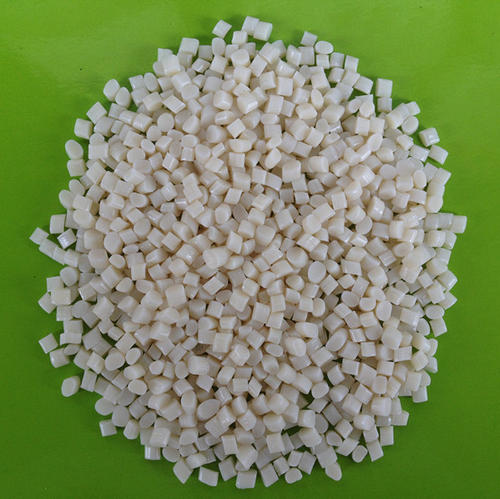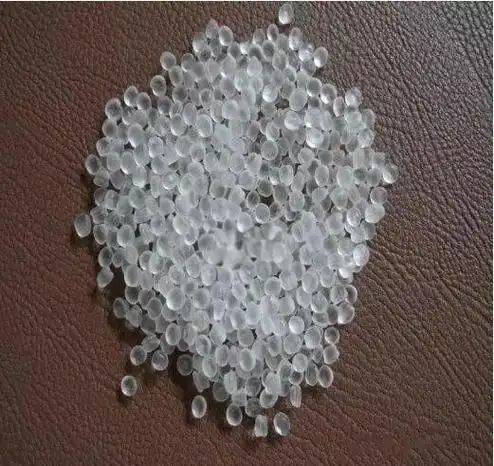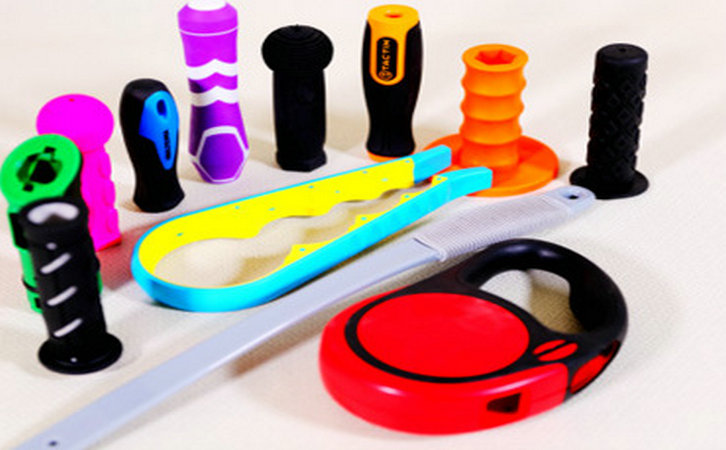I’ve been working in the injection molding industry for over a decade and have tackled numerous challenges when overmolding TPEs (thermoplastic elastomers) onto metal parts. One of the most challenging issues is shrinkage, which impacts the dimensional accuracy and bond quality of the final product. If the TPE doesn’t bond effectively or shrinks excessively around the metal insert, it can lead to part defects, material waste, and customer disappointment. If you’re struggling with this issue, you’re not alone. In this article, I’ll provide an in-depth analysis of the root causes of shrinkage in TPE overmolding, share some practical injection molding machine adjustment strategies, and offer tips for ensuring high-quality parts. My goal is to leverage my experience and industry data to help you effectively troubleshoot and optimize your processes.

Understanding Shrinkage in TPE Overmolding
Shrinkage in injection molding refers to the dimensional reduction of a part as it cools from a molten state to a solid. In TPE overmolding, where a soft, rubber-like TPE is molded over a rigid metal substrate, shrinkage becomes trickier due to the interplay of materials with different thermal properties. Metal inserts, like steel or aluminum, have negligible shrinkage compared to TPE, which can shrink between 0.5% to 2.5% depending on the grade, part geometry, and processing conditions. This mismatch can cause issues like warping, poor adhesion, or dimensional inaccuracies.
From my years on the factory floor, I’ve seen shrinkage issues arise from several factors: improper material selection, suboptimal mold design, or incorrect machine settings. For instance, a client once approached me with a batch of TPE-overmolded steel handles that were consistently undersized, leading to loose fits and customer complaints. After analyzing the process, we pinpointed the issue to inadequate packing pressure and uneven cooling. By addressing these, we reduced shrinkage and improved part quality. Let’s dive into the key adjustments you can make to tackle shrinkage in your TPE overmolding process.
Key Factors Influencing TPE Shrinkage
Before tweaking your injection molding machine, it’s crucial to understand the factors that contribute to shrinkage in TPE overmolding:
Material Properties: TPE grades vary in shrinkage rates. For example, softer TPEs (e.g., 30 Shore A) tend to shrink more than harder grades (e.g., 70 Shore A). Additionally, TPE’s compatibility with the metal substrate affects bonding and shrinkage behavior.
Mold Design: Gate location, wall thickness, and cooling channel design significantly impact how TPE flows and cools. Poorly designed molds can lead to uneven shrinkage or weak adhesion.
Processing Parameters: Injection speed, packing pressure, mold temperature, and cooling time are critical. Incorrect settings can cause incomplete filling, excessive shrinkage, or internal stresses.
Metal Substrate: Metal inserts don’t shrink, creating stress at the TPE-metal interface. Surface preparation (e.g., texturing or priming) can influence bonding and shrinkage outcomes.
Part Geometry: Thick sections shrink more than thin ones, and complex geometries can lead to uneven cooling, exacerbating shrinkage issues.
Machine Adjustments to Minimize Shrinkage
Based on my experience, adjusting an injection molding machine for TPE overmolding requires a systematic approach. Below, I outline the key parameters to tweak, along with practical tips to optimize them. These adjustments assume you’re using a standard injection molding machine with a reciprocating screw, though digitally controlled machines offer more precision for complex parts.

1. Optimize Injection Pressure and Speed
Injection pressure ensures the TPE fills the mold completely, compensating for shrinkage as the material cools. For TPE overmolding, I recommend starting with a high injection pressure (80-90% of the machine’s capacity) to pack the material tightly against the metal insert. However, excessively high pressure can cause flash or stress marks.
Injection speed also plays a role. A faster speed reduces the time TPE spends in the barrel, minimizing cooling before it reaches the mold. However, too fast a speed can lead to air entrapment or burn marks. I’ve found that a moderate speed (e.g., 50-70 mm/s) works well for most TPE grades. For a recent project involving TPE overmolded steel bolts, we increased injection speed by 10% and saw a 15% reduction in shrinkage defects.
Tip: Check the material datasheet for recommended injection pressure (typically 600-1200 bar for TPE) and adjust incrementally while monitoring part quality.
2. Adjust Packing and Holding Pressure
The packing phase is where you can directly combat shrinkage. After the initial injection, maintain holding pressure to force more material into the mold as the TPE cools and contracts. For TPE, holding pressure should be 50-70% of the injection pressure, sustained for 5-20 seconds depending on part thickness. In my experience, insufficient holding time is a common culprit for shrinkage issues.
For example, during a project with TPE-overmolded aluminum frames, we noticed voids near the metal insert. By extending the holding time from 8 to 12 seconds and increasing holding pressure by 20%, we eliminated the voids and achieved better dimensional stability.
Tip: Gradually increase holding pressure and time, but avoid overpacking, which can cause flash or distort the metal insert.
3. Control Mold Temperature
Mold temperature is critical for TPE overmolding. Too low, and the TPE may freeze prematurely, leading to incomplete filling or flow marks. Too high, and it extends cooling time, increasing shrinkage. For TPE, mold temperatures typically range from 20°C to 80°C, depending on the grade. I recommend starting at 40°C and adjusting based on part appearance and shrinkage.
In one case, a client’s TPE grips were shrinking excessively around steel rods. We raised the mold temperature from 30°C to 50°C, which improved flow and reduced shrinkage by 0.3%. Additionally, ensure the mold is uniformly heated to avoid uneven cooling, which can cause warping.
Tip: Use a mold temperature controller and verify cooling channel efficiency to maintain consistent temperatures across the mold.
4. Extend Cooling Time
Cooling time allows the TPE to solidify before ejection, reducing post-mold shrinkage. For TPE overmolding, cooling times typically range from 30-40 seconds for a 0.1-inch wall thickness. Thicker parts may require longer. In a project involving TPE-overmolded iron brackets, we extended cooling time from 25 to 35 seconds, which stabilized the part dimensions and reduced shrinkage by 0.2%.
Tip: Balance cooling time with cycle efficiency. Overcooling can slow production, so test incrementally to find the sweet spot.
5. Fine-Tune Melt Temperature
Melt temperature affects TPE’s viscosity and flow. For most TPE grades, the recommended range is 170°C to 230°C. A higher melt temperature reduces viscosity, improving mold filling and reducing shrinkage, but excessive heat can degrade the material or cause flash. I once worked on a TPE-overmolded steel tool handle where a melt temperature of 200°C resulted in flow marks. Adjusting to 190°C improved surface quality and adhesion.
Tip: Start at the lower end of the recommended range and increase in 5°C increments, monitoring for degradation or defects.

6. Pre-Dry TPE Material
TPE is hygroscopic, meaning it absorbs moisture, which can cause bubbles or inconsistent shrinkage. Before molding, dry the TPE pellets at 80-100°C for 2-4 hours, as specified in the material datasheet. In a project with TPE-overmolded copper inserts, we initially overlooked drying, leading to surface defects. After implementing proper drying, shrinkage consistency improved significantly.
Tip: Use a dehumidifying dryer and check moisture levels with a moisture analyzer to ensure optimal material condition.
Mold Design Considerations
While machine adjustments are critical, mold design plays a significant role in controlling shrinkage. Here are key design tips based on my experience:
Gate Location: Use edge gates or thicker gates centrally located to ensure even flow and packing. Avoid gating in thin sections, as they freeze quickly and limit material flow to thicker areas.
Wall Thickness: Maintain uniform TPE thickness (1-3 mm) to minimize uneven shrinkage. Core out thick sections to reduce material volume and cycle time.
Surface Texture: Texture the metal insert’s surface to enhance TPE adhesion, reducing delamination and shrinkage stress. A roughness of Ra 0.8-1.6 µm works well.
Shut-Off Design: Incorporate a 0.38-0.76 mm deep groove along the TPE-metal interface to prevent flash and improve bonding.
In a project with TPE-overmolded steel plates, we added a textured groove to the metal surface, which improved adhesion and reduced shrinkage-related warping by 25%.
Data-Driven Insights: Shrinkage Rates and Adjustments
To provide a clearer picture, I’ve compiled a table summarizing typical TPE shrinkage rates and recommended adjustments based on industry data and my experience:
|
TPE Grade |
Shrinkage Rate (%) |
Recommended Adjustment |
Expected Outcome |
|---|---|---|---|
|
Soft TPE (30-50 Shore A) |
1.5-2.5% |
Increase holding pressure by 10-20%, extend cooling time to 35-40s |
Reduced voids, better adhesion |
|
Medium TPE (50-70 Shore A) |
1.0-1.8% |
Raise mold temperature to 40-60°C, optimize gate size |
Improved flow, less warping |
|
Hard TPE (70+ Shore A) |
0.5-1.2% |
Use high injection speed, pre-dry material |
Enhanced dimensional stability |
|
TPE with Fillers |
0.8-1.5% |
Adjust packing pressure, verify metal surface prep |
Consistent bonding, reduced stress |
Data Source: Industry material datasheets and personal project records (2024)
This table serves as a starting point. Always consult the specific TPE grade’s datasheet and conduct test shots to fine-tune settings.
Real-World Case Study
A few years ago, I worked with a manufacturer producing TPE-overmolded iron tool grips. The initial runs showed excessive shrinkage (2.3%), causing loose fits and poor grip feel. After analyzing the process, we made the following adjustments:
Increased holding pressure from 600 to 800 bar to pack the TPE more densely.
Raised mold temperature from 30°C to 45°C to improve flow and adhesion.
Extended cooling time from 20 to 30 seconds to allow better solidification.
Textured the iron insert with a sandblasting process to enhance bonding.
These changes reduced shrinkage to 1.1%, improved adhesion, and eliminated customer complaints. The key was iterating through test shots and collaborating with the material supplier to verify settings.

Advanced Tips for Complex Projects
For high-precision or large-scale TPE overmolding, consider these advanced strategies:
Use Simulation Software: Tools like Autodesk Moldflow can predict shrinkage and optimize gate placement, saving time and costs. In one project, simulation reduced our trial-and-error phase by 50%.
Two-Shot Molding: If your machine supports it, use a two-shot process to inject the substrate and TPE sequentially in one mold, improving precision and cycle time.
Collaborate with Suppliers: Work closely with your TPE supplier to select a grade with low shrinkage and high adhesion to metal. They can provide tailored processing guidelines.
Test with Prototype Molds: Before full production, use a prototype mold to test shrinkage on a similar part. This helped me save a client $10,000 in rework costs on a TPE-overmolded steel bracket.
Common Pitfalls and How to Avoid Them
From my years in the field, here are pitfalls to watch out for:
Ignoring Material Compatibility: Ensure the TPE grade bonds well with the metal substrate. For example, TPE adheres poorly to POM (polyoxymethylene) without a compatibilizer.
Overlooking Metal Preparation: Clean and texture the metal insert to avoid delamination. A simple degreasing step can make a big difference.
Neglecting Post-Mold Shrinkage: TPE parts may shrink slightly for 24-48 hours after ejection. Delay dimensional inspections until the part stabilizes.
Rushing Adjustments: Make incremental changes and document results to avoid overcorrecting, which can introduce new defects like flash or burns.
Final Thoughts
Dealing with shrinkage in TPE overmolding metal parts can feel like a puzzle, but with the right adjustments, it’s manageable. By optimizing injection pressure, packing, mold temperature, cooling time, and material preparation, you can significantly reduce shrinkage and improve part quality. My advice? Start with the material datasheet, run test shots, and iterate systematically. Every project is unique, so collaborate with your team and suppliers to fine-tune the process.
In my career, I’ve seen how small tweaks—like a 10°C increase in mold temperature or a few seconds of extra cooling—can transform a problematic production run into a success. With patience and precision, you’ll get those TPE-overmolded parts meeting specs and delighting customers.

Related Questions and Answers
Q1: Why does my TPE shrink more than expected around metal inserts?
A: Excessive shrinkage often stems from insufficient packing pressure, low mold temperature, or improper material drying. Check the TPE datasheet for recommended settings and ensure the metal insert is textured for better adhesion.
Q2: Can I use the same settings for different TPE grades?
A: No, each TPE grade has unique shrinkage and processing requirements. Always refer to the material datasheet and adjust injection pressure, mold temperature, and cooling time accordingly.
Q3: How do I prevent flash in TPE overmolding?
A: Reduce injection pressure, lower melt temperature, or incorporate a shut-off groove (0.38-0.76 mm) in the mold design to minimize flash while maintaining adequate packing.
Q4: What’s the best way to test for shrinkage before production?
A: Use a prototype mold with similar geometry and run test shots with your chosen TPE grade. Measure the parts after 24-48 hours to account for post-mold shrinkage and adjust the mold design if needed.





